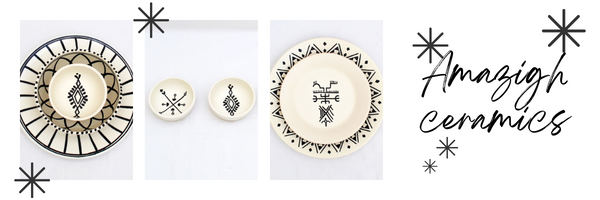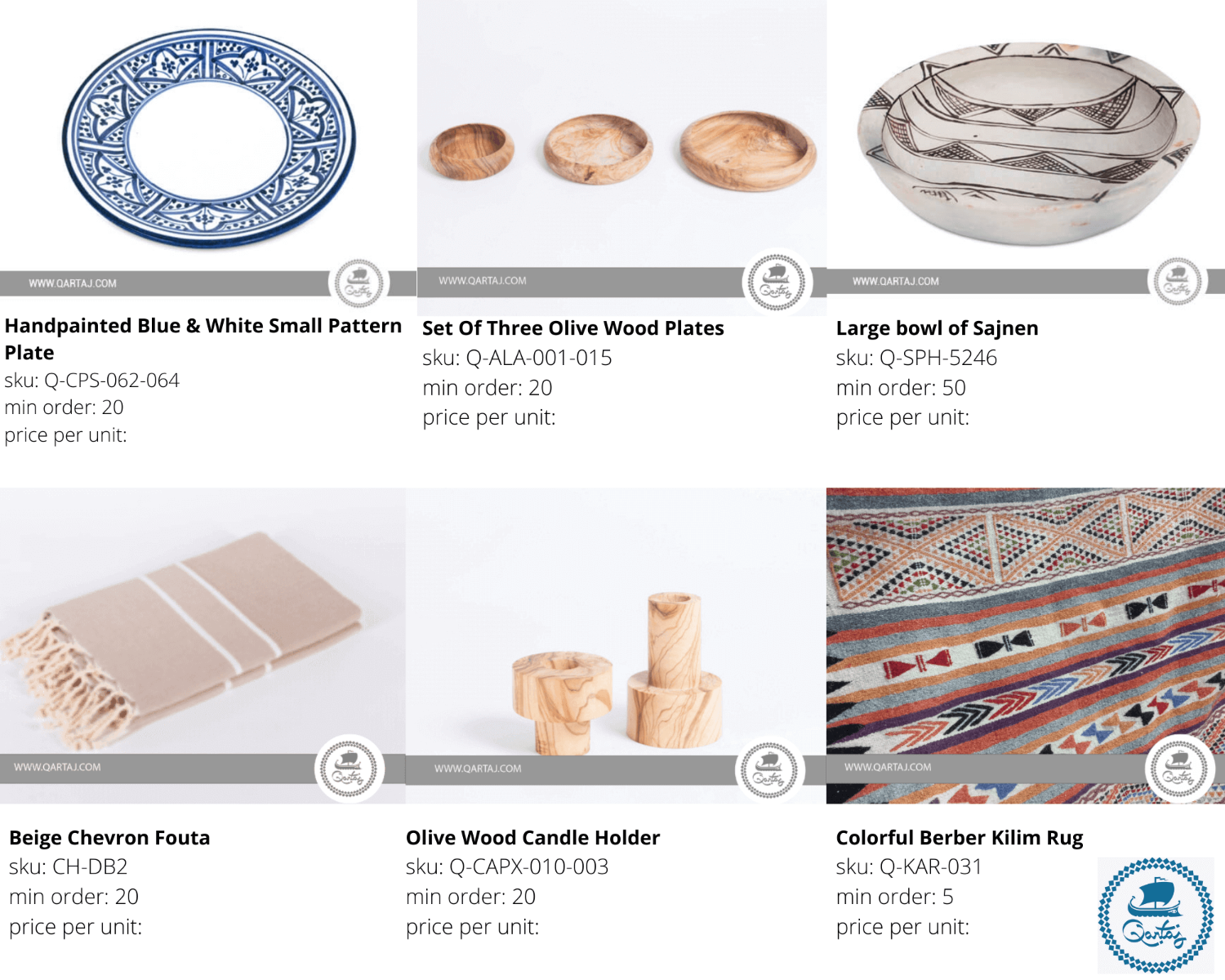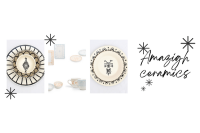
This article is part of a series about Amazigh culture and crafts.
Read more about Amazigh tattoos and symbols here, if you want to know more about Amazigh rug weaving you can read that article if you click here.
We have already written about ceramic designs and their origins. While most ceramic styles stem from French, Spanish and Turkish influences, when walking around the medina and souks today you can find many ceramic pieces decorated with Amazigh symbols. This is a more recent innovation and not tradition. It could be that craftspeople began using these signs as a way to pay respect to their past ancestry. We can find ceramics adorned with the common Amazigh symbols or points, triangles, V shapes and the fibula, a traditional Amazigh brooch used by women.
These designs are popular and have been innovated and mixed with more traditional ceramic designs. Especially in northern city Nabeul, the beacon of ceramics in Tunisia, you can find many workshops applying these designs on tableware and other decorative items.

World-Renowned Pottery
As Amazigh designs are an innovation applied in ceramics, we look to the true Amazigh pottery, which can be defined under the name of pottery of Sejnane.
Sejnane is a small city in the North East of Tunisia known for its rustic pottery. The craft has been recognized by UNESCO as intangible cultural heritage of humanity in 2018, recognizing the important role of their work in preserving traditional pottery, fostering community around an ancestral tradition and generating income for the region.
The pottery style defined as Sejnane pottery can actually be found all over Tunisia and has its true origins in the Amazigh culture and community.
The art of ceramics and pottery is rooted in the local traditions of the Maghreb countries. Since Antiquity, the Amazigh have been credited with the use of terracotta tanks such as jars to store and preserve crops of wheat, lentils, dates and olive oil.
Oil lamps and clay figurines were used in wedding ceremonies to bring good luck and ward off evil spirits. These same articles, found during excavations of prehistoric coffins, confirm the originality of this art.
The specific methods to make these pieces out of local materials have protohistoric roots, having been passed down from each generation of women for over 3,000 years.
Figures and motifs
The potters of Sejnane produce terracotta artifacts inspired by the environment whose decorations are two-tone geometric patterns reminiscent of the tattoos and the way of life of the Amazigh inhabitants of the Sejnane region.
Sejnane is a center for the production of artisanal pottery whose motifs are Amazigh. These are symmetrical and convergent patterns, often figurative, traced in red and black used since the end of the Bronze Age. The pottery is shaped by hand without using an oven or lathe, then cooked over a fire made up of branches and cow dung. The use of this artisanal pottery is mainly intended for the preservation and cooking of food, unlike the glazed pottery of Nabeul.
Meaning of a few symbols :
The diamond face is occupied by a snake rising vertically
The bird symbolizes heaven-earth contact
The flower symbolizes grace in ceramics
The spider symbolizes femininity
The sun symbolizes patience, hardworking life and harmony.
The anchor symbolizes fidelity, inner balance and lucidity.
Rams symbolize fertility and opposition.

